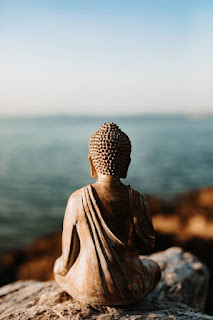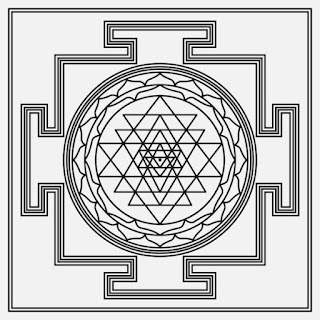The Higher Formless Jhanas: Exploring Infinite Consciousness and Beyond
The Higher Formless Jhanas: Exploring Infinite Consciousness and Beyond
The Significance of the Formless Jhanas in Deep Meditation
The journey into the formless Jhanas is one of the most subtle and profound experiences a meditator can encounter. These higher meditative states—spanning Infinite Space, Infinite Consciousness, Nothingness, and the realm of Neither Perception nor Non-Perception—represent the pinnacle of concentration and mindfulness practices. The formless Jhanas hold immense significance in the landscape of spiritual development and have been revered in ancient Buddhist texts, such as the Visuddhimagga (The Path of Purification) by the scholar-monk Buddhaghosa, as essential stages on the path to liberation.
The importance of these states lies in their ability to transcend ordinary perceptions of reality, providing direct insights into the nature of consciousness, emptiness, and the impermanent nature of all things. By entering these states, practitioners can experience a profound release from attachment and clinging, offering a glimpse into a reality beyond form and physicality. The Buddha himself emphasized the necessity of mastering the Jhanas in the pursuit of enlightenment, teaching that the deep stillness and unification of mind cultivated through these practices pave the way to ultimate freedom from suffering.
Preparing for the formless Jhanas requires an extraordinary level of concentration, often developed through rigorous mindfulness practices and preliminary Jhanic states. It is through deep, sustained mindfulness and a focused mind that one can begin to navigate the delicate and refined shifts in awareness that characterize these profound states. The cultivation of concentration (samadhi) serves as the foundation for entering the formless Jhanas, allowing the mind to settle into a state of complete absorption, free from the distractions of thought and sensory input.
This spiritual discipline is not simply a practice of calming the mind but a profound exploration of the mind’s potential. It invites meditators to experience consciousness beyond the habitual patterns of grasping and aversion, fostering a direct understanding of impermanence and the interconnected nature of all things. As we delve deeper into the higher formless Jhanas, we are challenged to let go of our most ingrained attachments to self and reality, moving closer to the ultimate goal of spiritual liberation.
Entering Infinite Consciousness: The Second Formless Jhana
Entering Infinite Consciousness
After experiencing the vast and boundless realm of Infinite Space, the natural progression in the journey through the formless Jhanas is to move into the state of Infinite Consciousness. This transition, however, is not without its challenges. The shift from perceiving boundless space to perceiving consciousness itself requires a refinement of awareness that can be difficult to achieve and even more challenging to maintain.
Challenges and Common Obstacles
One of the primary challenges meditators face when attempting to enter Infinite Consciousness is the deeply ingrained habit of identifying with forms and objects. The mind, accustomed to grasping and labeling everything it perceives, often struggles to release its attachment to familiar constructs. When transitioning from the experience of Infinite Space, where awareness is focused outwardly on the expanse of space, to Infinite Consciousness, where awareness turns inward to perceive itself, the mind may resist or become restless. This restlessness can manifest as a flood of distracting thoughts, physical discomfort, or an inability to fully let go of a sense of “self” observing the experience.
Another significant obstacle is the tendency for doubt to arise. The formless Jhanas are subtle and often beyond the realm of what words can describe, leading meditators to question whether they have truly entered the state or if they are merely imagining it. Doubt can disrupt concentration and make it difficult to progress. Additionally, the experience of Infinite Consciousness can feel disorienting at first. The usual landmarks of perception, such as physical sensations or mental images, dissolve, and this formlessness can create a sense of vulnerability or fear.
Strategies and Preparatory Practices
To prepare for entering Infinite Consciousness, a strong foundation in concentration and mindfulness is essential. One effective strategy is to practice deep mindfulness of breathing or other samadhi-building techniques. The goal is to develop unwavering mental stability, allowing the mind to settle into a state of complete absorption. Spending ample time in the lower Jhanas, particularly the Fourth Jhana, helps stabilize the mind and establish a deep, unshakeable stillness. Once this foundation is built, the mind becomes more receptive to the subtleties of the formless Jhanas.
Visualization Practices: One technique that has been particularly helpful for me is using visualization to prepare the mind for the transition into Infinite Consciousness. While still in the experience of Infinite Space, I imagine my awareness expanding even further, not just encompassing space but becoming aware of the very act of perception. This mental exercise helps soften the mind’s habitual grasping at forms and creates a smoother transition to perceiving consciousness itself.
Mindfulness Techniques: Practicing mindfulness of thoughts and mental formations is another valuable preparatory practice. By observing thoughts as they arise and pass without identifying with them, meditators can cultivate a more detached and spacious relationship with their own awareness. This detachment is crucial when entering Infinite Consciousness, where even the sense of an observer must dissolve.
Overcoming Doubt: To combat doubt, it is helpful to study the teachings on the formless Jhanas and consult with experienced meditation teachers. Gaining a clearer intellectual understanding of these states can provide reassurance and help ground the meditator’s practice. Journaling about meditation experiences can also offer clarity and highlight patterns of progress.
Personal Journey and Insights
When I first attempted to move from Infinite Space to Infinite Consciousness, I remember feeling a sense of awe followed quickly by confusion. The vastness of space was familiar and comforting, but as I tried to direct my awareness toward consciousness itself, my mind rebelled. Thoughts intruded, questioning whether I was doing it correctly, and I found myself clinging to the concept of a “self” that was observing the process.
It took many sessions to overcome these obstacles, and what ultimately helped was the practice of radical surrender. Instead of trying to force my mind into the state of Infinite Consciousness, I focused on relaxing deeply and letting go of any expectations. I learned to observe the act of observation itself, letting awareness rest in the infinite field of consciousness. The experience was profound: there was no sense of a meditator or an object of meditation, only the seamless, boundless awareness that pervaded everything.
The insight that followed was life-changing. I realized that consciousness is not something confined to my body or mind but an infinite, non-localized field. Thoughts still arose, but they seemed like ripples on the surface of a vast ocean, insignificant and impermanent. This shift made it easier to let go of thoughts in everyday life, fostering a sense of spaciousness and equanimity that has deeply influenced my approach to both meditation and daily challenges.
Insights from Infinite Consciousness
Infinite Consciousness also reveals that the mind’s habitual patterns of grasping and identifying with thoughts are unnecessary. In this state, thoughts may arise, but they are seen as just part of the infinite field of consciousness—they are not “mine” or “me.” This shift has had a lasting impact on how I relate to thoughts in everyday life, making it easier to let them come and go without attachment.
The Realm of Nothingness: The Third Formless Jhana
After dwelling in Infinite Consciousness, the next step is moving into the state of Nothingness. This Jhana represents a further refinement of awareness. In Nothingness, even the sense of consciousness begins to dissolve. What remains is a profound sense of emptiness—not an emptiness that is negative or void, but an emptiness that is free from all objects, forms, and even consciousness itself.
What is Nothingness?
When I first entered Nothingness, it felt like stepping into an infinite void. At first, the experience was unsettling. My mind, accustomed to identifying with objects or consciousness, struggled to understand this profound emptiness. But as I settled into the state, I began to appreciate the peace and serenity that Nothingness offers. It is a state of pure rest, where all effort, even the effort to be conscious, is let go.
Insights from Nothingness
This insight has been deeply liberating for me. It showed me that much of what I experience as reality is constructed by the mind. By experiencing Nothingness, I’ve come to understand that beneath all of these constructs lies a vast, peaceful emptiness—a freedom from the endless cycle of grasping and aversion that characterizes ordinary consciousness.
Beyond Nothingness: Neither Perception nor Non-Perception
The final stage in the formless Jhanas is the state of Neither Perception nor Non-Perception. This is the most subtle and difficult to describe of all the Jhanas. It is a state that lies at the threshold between perception and complete cessation. In this state, even the subtle awareness of Nothingness begins to dissolve.
What is Neither Perception nor Non-Perception?
When I first encountered this state, it was difficult to grasp. There was a sense of being right on the edge of complete cessation, yet still, there was a subtle thread of awareness. It’s a state that requires an extraordinary degree of concentration and stillness. The mind becomes so refined that even the act of perceiving seems to fade into the background.
Insights from Neither Perception nor Non-Perception
For me, this Jhana has revealed the ultimate impermanence of all experiences, including consciousness itself. It has shown me that the mind, no matter how refined, is still a construct that can be let go. This realization has deepened my sense of peace and equanimity, allowing me to rest more fully in the present moment, free from the need to grasp or hold onto any experience.
The Role of Cessation (Nirodha Samapatti)
Beyond the formless Jhanas lies the state of Nirodha Samapatti, or the cessation of perception and feeling. In this state, all mental activities cease entirely, offering a taste of complete liberation from the cycle of birth and death, from samsara itself. This state is the culmination of the Jhana path and represents a profound release from all forms of clinging.
While I have only touched upon the threshold of this state, it has profoundly impacted how I view both meditation and life. The experience of cessation offers a glimpse into the ultimate peace that lies beyond all mental constructs, showing that true freedom is not found in any experience but in the release from all experience.
Stories and Teachings from Masters
The formless Jhanas have been revered and explored by countless meditation masters throughout history, each sharing profound wisdom and insights from their experiences. Their teachings serve as invaluable guidance, offering both inspiration and practical advice to meditators embarking on this advanced path.
Ajahn Brahm: A Contemporary Master’s Journey
One of the most well-known contemporary meditation masters, Ajahn Brahm, has shared vivid descriptions of his experiences with the Jhanas in his teachings and writings. Ajahn Brahm, a Theravada Buddhist monk and teacher, emphasizes the necessity of deep concentration and surrender when entering these states. In his book Mindfulness, Bliss, and Beyond, he describes the progression from the lower Jhanas into the formless realms, highlighting the profound sense of letting go that is required.
Ajahn Brahm often illustrates the experience of Infinite Consciousness with the metaphor of the sky. He describes how, after the mind is completely absorbed in the vastness of Infinite Space, the awareness shifts to become like the sky itself—boundless, luminous, and all-encompassing. There is no center, no edges, only pure, infinite awareness. This teaching serves as a reminder that true progress in meditation is not about achieving anything but about releasing more deeply into the present moment and the nature of awareness itself.
He also warns about the subtle traps meditators may encounter, such as grasping for the formless states or becoming attached to the experiences. His advice is to cultivate patience, humility, and the ability to rest fully in the experience without striving. This teaching can be a source of comfort for those who feel frustrated or stuck, reminding them that spiritual development often unfolds at its own pace.

The Buddha’s Teachings on the Formless Jhanas
The original teachings on the formless Jhanas come from the Buddha himself, who frequently discussed these meditative states in the Sutta Pitaka. In the Majjhima Nikaya (Middle-Length Discourses), the Buddha described how he entered and emerged from the formless Jhanas, using these states as a means of refining his mind and developing insight into the nature of reality.
One of the most inspiring stories from the Buddha’s life involves his mastery of these meditative states under the guidance of his early teachers, Alara Kalama and Uddaka Ramaputta. Both teachers taught advanced meditation techniques that led to the experience of the formless Jhanas. The Buddha learned to enter these states but eventually realized that they were not the ultimate goal of spiritual practice. Instead, they were powerful tools for developing concentration and equanimity, but true liberation required deeper insight into impermanence, suffering, and non-self.
This story highlights the balance between developing deep concentration and cultivating wisdom. It reminds meditators that while the formless Jhanas are extraordinary experiences, they are not ends in themselves. The ultimate purpose is to use the clarity and stability gained in these states to penetrate the true nature of reality and attain liberation.
Pa Auk Sayadaw: The Power of Precision
Pa Auk Sayadaw, a renowned Burmese meditation master, is another influential teacher who has extensively explored the formless Jhanas. His approach is known for its meticulous and precise instructions, particularly in the practice of concentration and the development of insight. He emphasizes the importance of developing strong jhana concentration before attempting the formless Jhanas, ensuring that the mind is stable and prepared for the subtle shifts in awareness.
Pa Auk Sayadaw teaches that entering the formless Jhanas requires a disciplined and step-by-step approach. He often compares meditation practice to constructing a building: a strong foundation (the lower Jhanas) must be established before moving to the higher levels. His methodical approach can be particularly inspiring for practitioners who value structure and clarity in their meditation practice. He also encourages students to be diligent and persistent, reassuring them that even if progress is slow, consistent effort will yield results.
Inspiration from These Teachings
These stories and teachings from meditation masters provide several key takeaways for those aspiring to experience the formless Jhanas:
- The Importance of Letting Go: Ajahn Brahm’s teachings emphasize that entering these states requires a deep level of surrender. This serves as a reminder that the path is about releasing, not grasping, and that true progress often comes when we let go of expectations and control.
- Balancing Concentration and Wisdom: The Buddha’s story illustrates the balance needed between developing concentration and using that clarity to gain insight. The formless Jhanas are powerful tools, but they must be used wisely to support deeper understanding and spiritual liberation.
- The Power of Discipline and Patience: Pa Auk Sayadaw’s precise approach underscores the value of a systematic and disciplined practice. His teachings inspire meditators to be patient and to approach their practice with a sense of dedication, understanding that each step builds upon the last.
By learning from these masters, meditators can gain both inspiration and practical strategies to advance their own practice. Their narratives illuminate the path, making the formless Jhanas feel more accessible and achievable, even in the face of obstacles and doubt. For anyone on the journey of deep meditation, these teachings provide a beacon of hope and a reminder of the transformative potential that lies within every moment of awareness.
Conclusion
The higher formless Jhanas take the meditator beyond the realms of space, consciousness, and even perception itself. These states offer profound insights into the nature of awareness, emptiness, and reality, challenging our ordinary understanding of self and existence.
For those willing to undertake the journey, the formless Jhanas reveal the boundless potential of the mind and the freedom that comes from letting go of all constructs. Whether you are just beginning your exploration of these states or are well along the path, the insights gained from the higher Jhanas can transform not only your meditation practice but also your understanding of life itself.
Resources for Deepening Your Meditation Practice with the Jhanas
- Entering the Formless Jhanas: My First Steps into Infinite Space
Read the full article - Common Pitfalls and Misconceptions About the Jhanas: What I’ve Learned
Explore insights - Achieving Equanimity in the Fourth Jhana: My Experience
Discover more - Meditation and Creativity: 10 Techniques to Unlock Your Creative Potential
Learn techniques - Reflection on My Jhana Journey: Integrating Meditation Insights
Read reflections - How the Jhanas Have Transformed My Spiritual Path
Explore transformation - Applying Jhana Meditation Insights to Everyday Life
Apply insights - Entering the Formless Jhanas: My First Steps into Infinite Space (Revisited)
Revisit the experience - My Journey into the Third Jhana
Read about the third Jhana - The Journey to the Second Jhana
Explore the second Jhana - Finding Joy and Tranquility in the First Jhana: Personal Reflections
Discover joy and tranquility - Main Blog Page: Harmony Centered
Visit the blog
Practical Tips for Aspiring Practitioners
Exploring the Jhanas, especially the formless ones, is a journey that requires patience, dedication, and a well-structured approach. For meditators eager to embark on this transformative path, there are several practical steps and guidelines to consider, ranging from setting up a conducive meditation environment to knowing when to seek guidance from an experienced teacher. These tips can help create the right conditions for deep and sustained meditative practice.
Setting Up a Conducive Meditation Environment
A serene and supportive environment can greatly enhance your ability to enter the deep states of concentration required for the Jhanas. Here are some key elements to consider:
- Choose a Quiet Space: Find a place where you are least likely to be disturbed by noise or interruptions. Silence is crucial, as even small distractions can disrupt concentration. If absolute silence isn’t possible, consider using earplugs or a white noise machine to minimize external sounds.
- Comfortable Seating: Make sure you have a comfortable meditation cushion or chair that supports good posture. The body should be at ease but alert, allowing you to sit for long periods without significant discomfort. Experiment with different sitting positions to find one that works best for your body.
- Minimal Distractions: Keep your meditation space simple and uncluttered. You can add calming elements such as a candle, a plant, or a small altar with meaningful objects, but avoid anything that could draw your attention away from your practice.
- Consistent Timing: Practicing meditation at the same time each day helps create a habit and conditions your mind to settle more easily. Early morning or late evening, when the world is quieter, are often ideal times.
The Importance of Consistent Practice
Consistency is key when it comes to developing the concentration needed for the Jhanas. Here are some strategies to stay committed to your practice:
- Daily Practice: Aim to meditate every day, even if only for a short time. Regularity is more important than the duration at first, as it helps build a strong foundation. As your concentration improves, you can gradually extend the length of your sessions.
- Gradual Progress: Don’t rush to enter the higher Jhanas right away. Spend ample time mastering the lower Jhanas, as they lay the groundwork for the formless states. Remember that meditation is a journey, and each stage has its own unique insights and benefits.
- Set Realistic Goals: Be gentle with yourself and set attainable goals. For example, instead of aiming for long periods of deep absorption right away, focus on simply being present and attentive to the breath or chosen meditation object.
- Mindful Transitions: Before and after your meditation sessions, take a few moments to mindfully transition in and out of practice. This helps integrate the calm and focus you’ve cultivated into the rest of your day.
Techniques for Deepening Concentration
To reach the level of concentration required for the Jhanas, you may find it helpful to use specific techniques:
- Breath Awareness: Focus intently on the breath, observing it as it flows in and out. If your mind wanders, gently bring it back to the breath without judgment. As concentration deepens, the breath may naturally become more subtle.
- Body Scanning: A body scan meditation before focusing on the breath can help release physical tension and settle the mind. This practice creates a sense of bodily ease, which is conducive to deep concentration.
- Visualization: Visualizing a peaceful image, such as a candle flame or a vast body of water, can be a useful tool for developing concentration. Once your mind becomes still and unified, you can let go of the visualization and focus on the pure awareness of the Jhana state.
- Mental Noting: For those who struggle with distraction, mentally noting “in” and “out” with each breath can help anchor the mind. Eventually, as concentration builds, you can drop the mental noting and rest in silent awareness.
When to Seek Guidance from a Teacher
The journey into the Jhanas can be subtle and complex, and it is often beneficial to have guidance from an experienced meditation teacher. Here are some indications that it might be time to seek support:
- Confusion or Doubt: If you find yourself feeling confused or uncertain about whether you are experiencing the Jhanas or are simply lost in imagination, a teacher can offer valuable insights and reassurance. They can help you differentiate between genuine meditative absorption and distractions.
- Plateaus or Obstacles: If you feel stuck or have reached a plateau in your practice, a teacher can provide techniques or adjustments to help you progress. They may suggest different methods to deepen concentration or help you address specific challenges, such as restlessness or dullness.
- Spiritual Safety: The higher Jhanas can be profoundly transformative, and it’s important to have a teacher who can guide you safely through these experiences. They can offer support and ensure that your practice remains balanced and grounded.
Cultivating Patience and Self-Compassion
Finally, remember that the path of deep meditation is not linear. There will be times when your mind is calm and concentrated and other times when it is restless or distracted. Be patient with yourself and treat your mind with the same compassion you would offer to a friend. Celebrate small victories and view setbacks as opportunities to learn and grow.
By following these practical tips and maintaining a spirit of curiosity and dedication, aspiring practitioners can create the right conditions for exploring the Jhanas. The journey may be challenging, but the insights and freedom gained are worth every moment of effort and stillness.










